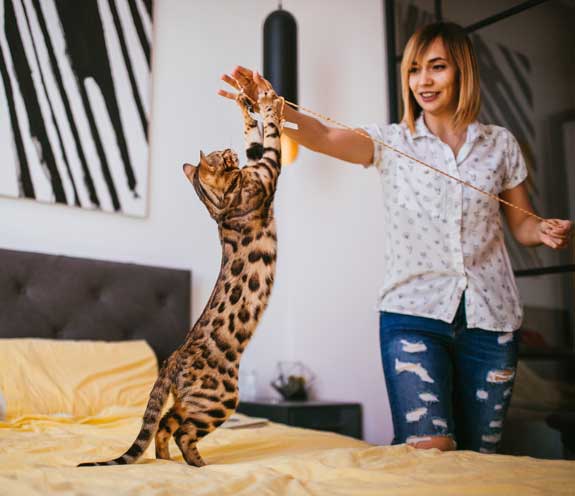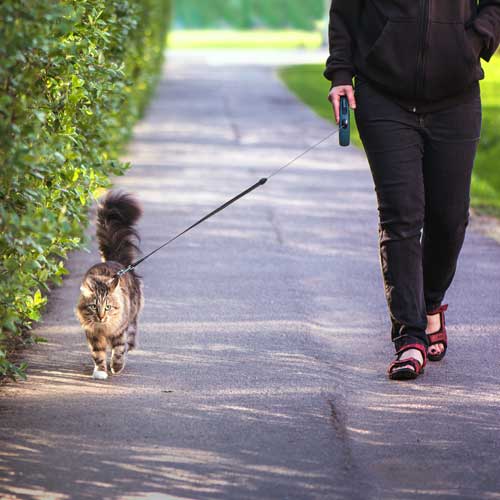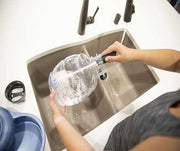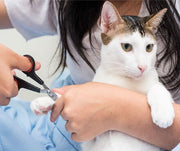Interactive Ways To Trick Your Indoor Cat Into Exercising

Having a cat as a pet can be both very rewarding, yet frustrating at the same time. It can be frustrating because cats usually have a personality of their own and do things they want to do. Not things you want them to do. But it can also be very rewarding when your cat picks your lap to lay down on. Or your hands for them to rub their little heads on. Along with these rewards cat ownership brings also brings a responsibility to make sure your cat stays healthy.
CATS & THEIR WEIGHT
Your cat's sex, breed, age, and body type will largely determine what your cat should weigh. Typically, pet cats should weigh anywhere between 7 and 25 pounds. Smaller breeds such as Siamese cats can weigh around 5-10 pounds while larger breeds like Maine Coons can weigh up to 25 pounds and be considered a healthy weight. Since cats are lazy creatures, they can easily gain weight and eventually become obese. Cat obesity can really affect your cat's health and well-being. For one, obesity can shorten your cat's life span. It can also increase your cat's risk of many types of cancers, diabetes, urinary bladder stones, and more. One or two extra pounds on a cat is equivalent to 15-20 pounds on a human. So, while a couple pounds may seem small, they could be detrimental to your cats health.
HOW CAN I TELL IF MY CAT IS OVERWEIGHT?
One way to tell if your cat is overweight is by looking down at it while its standing up. Your cat should have an hourglass shape. Your cat's belly should not hang down and you should be able to feel your cat's ribs if you slide your hand down their sides. If your cat has more of a round, donut shape when you look down at him, you may have an overweight feline. However, you should not immediately change your cat's diet or the amount of food you give them as this could lead to malnutrition. Before diagnosing your cat as overweight, it's important that you talk with your vet first. This is important because your cat's weight will largely depend on their age, breed, and sex. Your vet may recommend a diet or simply more exercise.
DO INDOOR CATS REALLY GET EXERCISE?
If you have an indoor cat, its likely that they are not getting much exercise by themselves. Cats are naturally lazy and are more of "watchers" rather than "doers". They enjoy taking cat naps throughout the day, lounging in high places, and of course eating. If you do not take the time to play with your cat and engage their natural instincts, it's likely that your cat is getting very little exercise a day, which will lead to obesity. Outdoor cats on the other hand usually do end up getting more exercise in a day because they are outside in their natural element chasing bugs, walking around, and climbing things.
HOW TO ENCOURAGE YOUR INDOOR CAT TO EXERCISE?
Interactive play is one of the most popular ways to get your cat to exercise. One way to encourage your cat to play is by first knowing what motivates them. For example, if you've got a cat that likes to stalk and hunt things like birds, butterflies, or flies then you have a cat that likes to hunt air prey. If your cat stalks and hunts lizards, worms, or grasshoppers then you've got a cat that likes to hunt ground prey. Knowing this will help your know how to encourage your cat to play.
EASY WAYS TO TRICK YOUR CAT INTO EXERCISING

Sometimes cats need to be tricked into exercise. A way to do this is through interactive play at least 30 minutes a day with your cat. When we say interactive play, we mean playtime between you and your cat. Below are some fun ways to interactively play with your cat while he or she exercises:
Cat Wands: Wands are a great way to get your cat moving. You can find a wide range of styles available both in stores and online in a wide variety of shapes, sizes, materials, etc. For cats who like to hunt air prey, try out a cat wand with feathers or frayed fabrics on the end. Flutter it in the air so that it mimics real prey to encourage your cat to give chase. For cats who like to stalk ground prey, try getting a wand that has a worm or bug-like attachment at the end. Move your wrist from side to side to make it slither or hop on the ground like a real bug to get your cat engaged. Remember to let your cat "catch" their prey every once in a while during play. If you don't, they may lose interest and not engage in play.
Multi-pet Households: If you've got a multi-pet household, try encouraging play between your dog and cat. However, you should make sure your dog is friendly with cats and vice versa. You should always supervise this type of play because sometimes dogs can get too aggressive.
Get Outside: If you're lucky enough to have a cat that's leash trained and enjoys the outdoors, try walking your cat around the neighborhood on their leash. These walks will both engage your cat's natural hunting instinct as well as provide much needed exercise. To help your cat warm up to the outdoors, try taking your cat for a stroll in a pet stroller. These pet strollers have a mesh material that zips up and completely locks your cat inside the stroller to prevent your cat from jumping out. They are a great way to help introduce your cat to the outdoors because they keep your cat secure and protected. Overtime your cat will warm up to all the smells and sights of the great outdoors. When they do, it's time to introduce your cat to a leash.

Lasers: Another popular way to trick your cat into exercising is with a laser. Cat's love chasing laser lights around the house. Just as your cat is about to pounce and catch the light, move it to another place. This will engage your cats instinct to chase and have him moving all over the home.
Toys, Toys, Toys: Make sure to have a wide variety of different toys around your home. Place them in random spots throughout your house so that your cat will find them when they explore. As weird as it may sound, some cats enjoy fetch! Try throwing a lightweight cat ball and see if you can get your cat to play a game of fetch. There are a lot of options when it comes to cat toys and some can get pretty expensive.
Playing with your cat at least 30 minutes a day will not only encourage your cat to exercise, but it will also help build an unbreakable bond between you and your cat. Over time, your cat will lose a couple pounds and you'll both look forward to playtime. Keeping your cat's weight under control is an important part of being a cat owner. So, make sure you pay attention to it and talk with your vet is you ever have any concerns.
Sources:
Previous article

Next article

Related posts
View all-

What Can You Use Instead of Cat Litter?
Traditional cat litter is convenient, but it’s not the only option. Many cat owners look for alternatives to reduce waste, save money, or avoid chemicals found in clay-based kitty litter. Some options offer better odor control, while others are more eco-friendly or gentler on a cat’s paws.
Read Article -

How to Keep My Backyard Smelling Fresh
A clean backyard should smell fresh, unlike pet waste, smoke, or mold. Bad smells can linger, especially when dog poop, urine, or food scraps attract flies and bacteria. If your yard has a foul odor, it's time to take action. The first step is cleaning up pet feces, trash, or rotting food. A garden hose can wash away dirt and urine from artificial turf, patios, and decks. To neutralize odor, Use baking soda, white vinegar, and essential oils.
Read Article -

What Supplies Do First-Time Cat Owners Need?
Bringing home a new cat is exciting, but making them feel safe and comfortable takes more than love. First-time cat owners must prepare with the right supplies to ensure a smooth transition. From a litter box to cat food and a warm bed, having the basics ready can help your new kitty settle in faster. This guide covers everything a new cat owner needs to make their new pet feel at home.
Read Article



